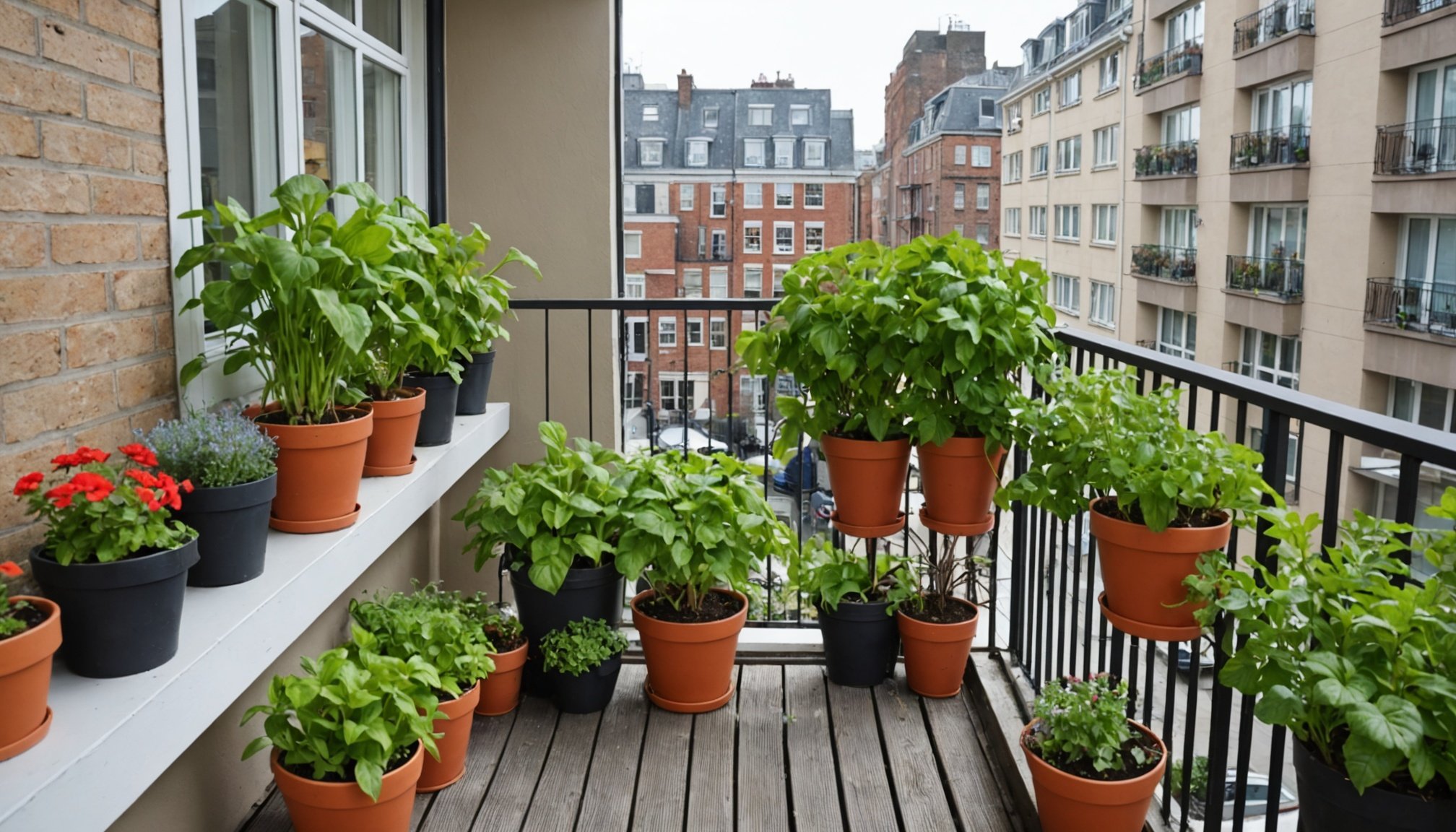Balcony gardening transforms limited outdoor space into a vibrant green retreat. By selecting lightweight containers and plants suited to your balcony’s light, wind, and weight conditions, you can create a thriving garden—even in a small city space. Discover practical tips to maximise vertical areas, choose the right plants, and maintain your balcony oasis throughout the seasons with minimal effort.
Effective Strategies for Small Balcony Gardening
Balcony gardening begins with selecting the right containers and plants based on space and sunlight. Prioritize lightweight, durable planters—plastic or resin are ideal for ease of movement and wind resistance. Vertical space is crucial; wall-mounted planters, trellises, and hanging baskets maximize limited area while adding visual interest.
In the same genre : How Can You Optimize Your UK Garden for Sustainable Living?
Assess weight capacities carefully—wet compost and heavy terracotta pots may exceed limits. Lightweight composts and containers help prevent overloading. Leafy greens like lettuce or herbs such as parsley thrive in shaded spots, while sun-loving plants like lavender and Mediterranean herbs excel in full sun.
Creating a small balcony garden involves creative space-saving hacks, including vertical planting and compact garden tools. Incorporate plants suitable for your environment and consider environmental influences like wind and shade for successful growth. Overall, thoughtful planning and choice of containers and plants ensure a thriving, manageable balcony garden, making balcony gardening accessible and enjoyable.
Topic to read : Top-rated garden landscaping services in gloucestershire
Selecting Plants and Containers for Balcony Gardens
Best Vegetables and Herbs for Small Spaces
When growing vegetables in containers, prioritize adaptable, space-saving crops. Tomatoes, lettuce, carrots, and potatoes are some of the best vegetables for small spaces; they grow well in containers and suit balconies of any size. Herbs such as parsley, chervil, basil, and thyme are reliable herbs suitable for balcony settings, providing fresh flavors in minimal space. Smart planting arrangements—like clustering quick-growing greens with slow-maturing roots—help maximize each container’s productivity.
Choosing Suitable Containers and Planters
Balcony planter selection should focus on lightweight yet sturdy solutions such as plastic pots, fabric grow bags, or lightweight terracotta alternatives. Ensure all containers offer excellent drainage and are sized to accommodate root development. For inspiration on container gardening ideas, try upcycling wooden crates, woven bags, or decorative storage bins, provided they maintain good aeration and hold soil securely.
Plant Compatibility and Environmental Suitability
Select plants based on your balcony’s sunlight and wind exposure. Sun-loving options—such as lavender, rosemary, and succulents—thrive on open, bright balconies, while shade-tolerant choices like hostas or begonias are ideal for covered spaces. Combine herbs suitable for balcony with wind- or drought-tolerant varieties to build a resilient, productive haven tailored to your environment.
Maintenance, Environmental Challenges, and Space Optimization
Balcony garden maintenance starts with consistent watering techniques and nutrient management. For container gardening ideas, self-watering planters help balance moisture, while DIY self-watering systems and drip irrigation for container plants minimize daily upkeep. Organic fertilization methods, such as compost tea or slow-release pellets, maintain soil nutrition without overwhelming busy schedules. Regular observation aids early identification and natural treatment of pests, using solutions like neem oil or companion planting in containers to ward off infestation.
Environmental factors can pose unique challenges. Windbreak techniques include tactically placing screens, taller plants, or flexible barriers to shield fragile foliage from excessive wind. To counter strong sun or heat on a small balcony, hang reflective surfaces or shade-cloth above sensitive planters. Adjust watering schedules and container placement as needed for these variable conditions, which is especially important for growing vegetables in containers exposed to urban weather extremes.
To maximize limited space, use vertical planting ideas such as living walls or balcony trellises for vining crops and herbs suitable for balcony growing. Hanging baskets, railing planters, and combining varied plant heights enable thriving small space planting tips, making any balcony garden efficient, productive, and visually appealing.
Smart Plant Selection and Container Choices
Precision first: For successful balcony gardening, always match plant variety to your available light, wind exposure, and space. Use lightweight balcony planters and raised planters on balconies to prevent overloading your structure. Select compact and beginner-friendly vegetables such as lettuce, cherry tomatoes, and herbs suitable for balcony conditions.
For shaded balconies, opt for plant selection for shade balconies like rocket, parsley, and ferns—these stay healthy with less direct sun, following the sunlight requirements for plants on balcony. In sunny, dry spots, Mediterranean herbs and succulents thrive, showcasing low-maintenance garden plants that resist both drought and wind.
Try creative pot arrangement by grouping several small planters or using vertical herb garden structures for space-saving garden hacks. Urban garden setup benefits from composting in small spaces using compact compost bins and lightweight soil to ease handling.
DIY vertical garden ideas, such as wall-mounted trellises or stacked balcony planters, boost your growth area and meet maximizing vertical space needs. Ensure your containers suit both soil types for container gardening and balcony garden maintenance, focusing on drainage and portability.











